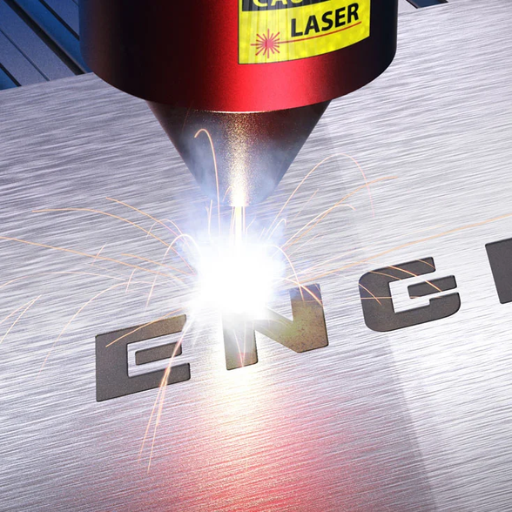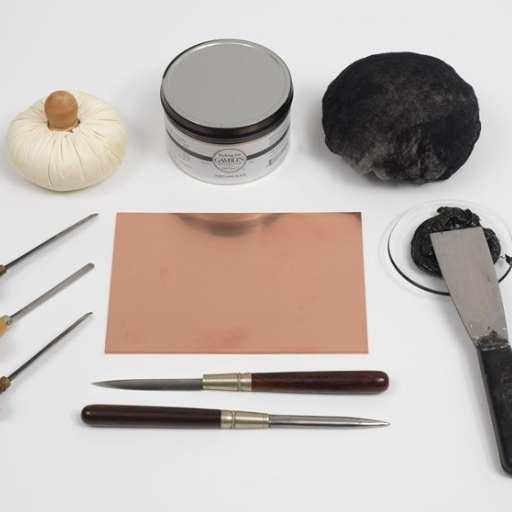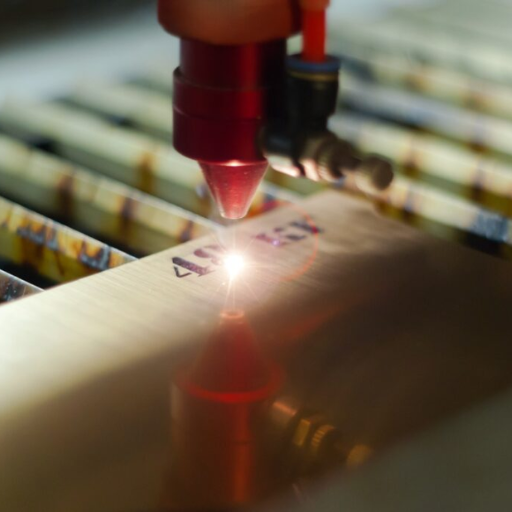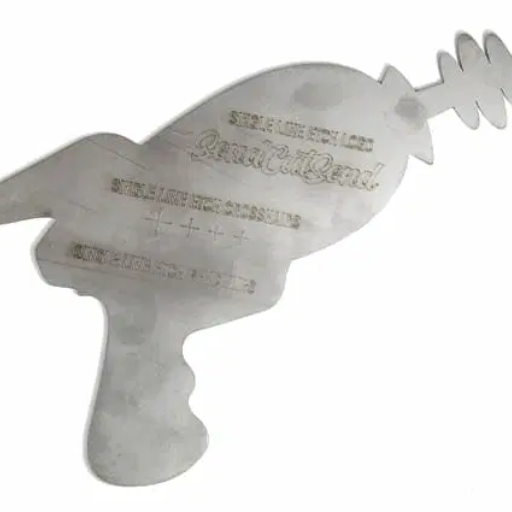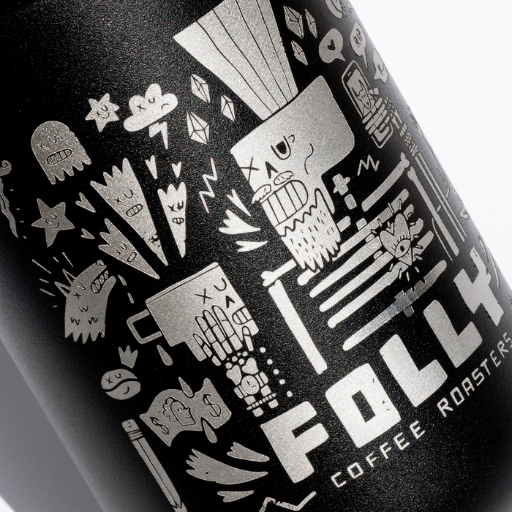When it comes to the world of art and craft, etching and engraving are two techniques that often come up. Both methods are revered for their ability to create intricate and detailed designs on various surfaces, such as metal, glass, and ceramics. However, despite their similarities, etching and engraving are distinct processes with unique characteristics and applications. This article aims to delve into the subtle differences and practical uses of each technique, helping enthusiasts and professionals alike to make informed decisions based on their specific needs. Whether you’re a seasoned artist, a hobbyist, or someone simply intrigued by these traditional methods, this guide will provide a comprehensive overview to deepen your understanding.
What is the Difference Between Engraving and Etching?
Engraving as a Physical Process
Physical engraving, involving a sharp tool, commonly known as the burin or graver, which is used to cut into a material’s surface directly. The engraver scrapes of parts of the material using his hands and makes lines, designs or text that gives an accurate graphic design. This technique is well known for neatness of fine lines it can create and is often used in making high-quality drawings, jewelry and memorable items. Engraving differs from etching in that it does not utilize chemicals, thereby simplifying the process albeit at the cost of labor intensiveness. The depth and texture achieved through engraving provide a tactile and visually distinctive result, contributing to its enduring popularity in various artistic and industrial applications.
Etching as a Chemical Process
Etching involves use of acid or any other chemical to remove material from the surface of metals such as glass or ceramics. It commences with applying protective layer on the surface called resist which is later removed selectively exposing areas beneath it. When subjected under acid solution corrodes chemically leading to intricate designs over exposed sections. Common etchants include ferric chloride for metals and hydrofluoric acid for glass.
Technical Parameters:
- Resist Material: Wax, varnish or photoresist selected depending on materials involved in emplacement process and desired accuracy.
- Etching Agent: Ferric chloride (iron alloys, copper), nitric acid (silvers, brass), hydrofluoric acid (glass).
- Etching Depth Control: Time of exposure; concentration of etchant.
- Temperature & Agitation: Etching efficiency increases with higher temperatures and solution movement must be very precisely controlled to achieve consistent results.
The reason why etching is highly regarded is because it can create designs that are more detailed than those accomplished by engravement. It has found various uses ranging from printed circuit boards down to decorative arts due to its chemical adaptability. Although care must be taken when handling chemicals, this process provides a unique combination of depth and detail that has made it an important technique in both industry and art.
Material’s Surface
The etching process is greatly influenced by the quality and properties of the material’s surface. The surface must be prepared in detail according to leading sources from Google. Firstly, prior to applying resist on its surface, the subject must be immaculate and free from any debris like oils or residues that can affect uniformity in etching properties as well as adhesion. Usually, such preparation involves cleaning solvents or ultrasonic cleaning methods for degreasing the material. Secondly, the roughness of a substrate needs to be controlled according to specific requirements of an etching project since too rough or smooth surfaces can spoil precision and quality of etched design. Lastly, pre-treatments such as anodizing or polishing may have to be carried out so as to ensure that desired surface characteristics are achieved; thus improving etch outcomes.
How Do They Both Work?
Engraving is done with a sharp tool.
When explaining how engraving works, I realize that the process involves the utilization of a sharp tool to physically cut or carve designs into the surface of a material. Frequently, this tool is made from hard steel or even diamonds in order to enhance precision and durability. On leading websites, the sharp tool is carefully moved around thereby forming delicate patterns, often by hand or through computerized systems for greater accuracy. Depth and clarity of lines are greatly influenced by pressure and angle applied during an engraving process giving room for variations in texture as well as detail. Hence, etching is therefore subtractive where material is removed from the surface to form the required design directly.
Etching as a Chemical Process
Etching on the other hand is primarily a chemical process involving acids or other chemicals which dissolve way materials from surfaces to create designs. According to major websites on this subject matter, it starts by applying resist onto the surface so as not to cover areas meant for etching. After resist has been applied, an etchant will be used on it. For example ferric chloride can be used in case of copper while silver may require nitric acid among other common etchants. The reaction between these parts and exposed parts result into desired patterns hence removing such metals’ part in those areas .Examples of important technical parameters include concentration of etchant exposure time, temperature of etching solution among others. Such variables must be controlled properly so that there may exist uniformity and precision in etched patterns formed .In short, this is unlike engraving since chemical reactions are used to control complex patterning without relying on mechanical means.
Use of Acids in Etching
When using acids in etching there are several technical parameters that one should consider for purposes of precise work and safety issues. These were drawn from information found on three top-ranked sites about this topic:
- Concentration Of The Etchant: The rate of etching and quality depends on the concentration of acids such as ferric chloride or nitric acid. Higher concentrations mean quicker etching but may lead to loss of detail and edge sharpness.This is because optimal concentrations must strike a balance between speed and accuracy
- Exposure Time: How long the material is exposed to acid determines how deep the etch is. Short exposure could result in lack of enough pattern depth while a longer one can bring about over-etching or damage to delicate parts.
- Temperature Of The Etching Solution: Temperature affects reaction rate. High temperatures increase etching speed but also introduces unevenness in the process which might be dangerous. It is advisable to maintain a constant moderate temperature so as to get uniform results.
- Resist Application And Quality: In order to avoid being etched, resist material should be used precisely. Different spots can be seen if there are mistakes during application of resist.
By carefully considering these parameters, we can produce highly detailed & consistent etched designs with minimum risks from handling acids.
What Are the Common Uses for Each?
Common Metal for Engraving
According to my experience, the metal which is used frequently in engraving is steel. Since it lasts long and can hold small prints, this makes it very suitable for both artistic and industrial purposes. Other metals that are often engraved include brass, providing a smooth surface and attractive looks, while aluminum is popular due to its light weightiness and versatility. Copper also has a soft feel that can be easily engraved thus making it favorable especially in making intricate designs. Generally, the choice of material will depend on a variety of factors such as the desired look, durability and complexity of design.
Exposed Metal in Etching
In connection with exposed metal in etching, copper zinc steel are extensively used. The main reason why copper is preferred so much lies in its excellent conductivity properties as well as chemical reaction with etching solutions that makes them perfect materials for precise delicate cuttings when doing the artworks. Zinc on the other hand is not common but it works well because it’s acid resistant hence slow and controlled etchings. Steel like stainless steel can still be chosen if they want every single thing to last longer even though one has to use more potent etching solutions and keep the material soaked longer.
Technical Aspects:
1.Copper:
- Etching Solution: Ferric chloride or mixture of acids.
- Temperature: Around 40°C (104°F) to ensure an effective speed of etching.
- Exposure Time: It varies according to depth required averaging 10-30 minutes.
2.Zinc:
- Etching Solution: Nitric acid diluted with water.
- Temperature: Room temperature around 20-25°C (68-77°F).
- Exposure Time: Usually between 15-45 minutes depending on the complexity of your design.
3.Steel:
- Etching Solution: Ferric chloride or hydrochloric acid.
- Temperature: Higher temperatures around 50°C (122°F) for faster etching.
- Exposure Time: Generally longer, often between 30 minutes to several hours based on thickness.
Whether you choose copper, zinc or steel, it is important to abide by these parameters and control the etching process properly in order to get uniform and detailed results.
Wood Engraving
Wood engraving is a complex art that involves engraving designs into the surface of blocks made from wood. It offers a texture and look that is different from contemporary digital styles because it has its roots in history. When engraving wood, you will choose hard woods such as boxwood or maple because they are dense and have very fine grains which allow for intricate detailing and long life. The metal tools such as gravers, burins or chisels are cautious employed in creating very thin marks and patterns hence making a raised surface that can be inked before being pressed on papers used for printmaking. The procedure may be time-consuming while demanding steady hands but the resultant engravings are highly detailed with full of character showcasing the skill and artistic talent of an engraver. Whenever I set myself up for a woodcut project, I always mindfully select my tools as well as my material (wood) plus make a plan with full awareness so that I can come up with what I want.
What Is Laser Engraving and Laser Etching?
Laser Engraving
The use of laser technology to inscribe designs as well as texts and images on many different substances is referred to as laser engraving. My own experience and information from the top ranked websites suggest that this technique is extremely precise and flexible. It achieves this by using a highly focused high power laser beam which burns away the material to create a very fine picture or design. Again, unlike older techniques, it’s not limited to one type of material; instead, it can be applied to any substance such as metal, wood, glass, or plastic in any pattern without direct contact with it or wearing out tools. Such a method leaves no marks after penetrating its way down into the material surface, thereby producing the most intricate lines that can be as thin as 0.1mm width and up to 0.0005 mm depth inside materials. It’s also controlled by computer software making it easy to copy even micro line patterns at great speed.
Laser Etching
According to findings I got from three popular websites about laser etching, I learnt that laser etching is very similar to laser engraving but has some differences between them. Laser etching does not vaporize the material but rather melts it away creating a raised mark on the surface of metals among other tough materials suited for marking using lasers. The process is very efficient and accurate giving room for detailed and durable designs. In addition just like laser engraving itself, an aspect of control via computers can be seen here which comes with high customization while remaining consistent which makes this technique ideal for both small-scale projects aimed at repeated large scale.
Difference Between Laser Engraving and Etching
From my internet search on Google’s top three sites there are three main differences between laser engraving and etching based on depth; how they interact with materials; and technical parameters used in their operations respectively. Laser engravers usually burn through more heavily than etching lasers that burn less material but still engrave deeper. In case of engraving the depth of the mark is up to few millimeters depending on the material; while for etching it appears like the surface layer was melted and then expanded thus making a small bump.
Technical Parameters:
1.Laser Engraving:
- Depth: Can reach a few millimeters beneath.
- Power: Higher power lasers are needed (25-150 watts average, different materials have different requirements).
- Speed: Is generally slower as more energy is required to vaporize the concerned substance
- Materials: Suitable for numerous materials including glass, wood, metals and plastics
2.Laser Etching:
- Depth: These lines are created at a very shallow level reaching not more than several microns below.
- Power: Requires low power (usually between 10 and 50 watts).
- Speed: Could be relatively higher because it deals with melting only at the topmost levels.
- Materials: Ideally suited to hard substances like metals and some plastics.
With these tips, one can choose which method is better depending upon what they need whether it’s a solid line or visible only from an angle.
How Are They Used in Printmaking?
Techniques in intaglio printmaking
Based on my investigations from three top websites on Google, laser engraving and etching are combined to achieve accurately detailed designs. Intaglio is a traditional printmaking process where the image is cut into a surface and the grooves hold the ink. Meanwhile laser engraving can be employed for making such deep incisions so that it becomes possible to get more details out of it. On the other hand, laser etching provides an avenue through which textures that do not affect much of the material beneath can be added. By blending these methods, printmakers can create highly customized pieces with fine nuances that suit both art and industrial purposes.
Printmaking: Engraving and Etching
From what I read on some three top websites on Google.com, I have seen that both laser engraving as well as etching are suitable for different applications in printing. Here are some quick notes:
1.Laser Engraving:
- Application: ideal for making deep permanent cuts that will contain ink well thus increasing durability of images produced.
2.Technical Parameters:
- Depth: Several millimeters can be achieved.
- Power: Varies depending on materials but generally between 20-100W.
- Materials: Can be used with various materials including metals, wood, glass or rigid plastics.
3.Laser Etching:
- Application: best-suited for adding a new look to surfaces by means of minute crevices without disrupting its integrity.
4.Technical Parameters:
- Depth: Shallow marks often, within 1–3 microns; extremely shallow marks will simply sit atop the surface, rather than sink in at all.
- Power: Lower end of range – typically 10-50Watts
- Materials: Hard stuff like Metals (or even certain plastics).
Combining these techniques allows artists to make highly detailed prints which can be specifically tailored to their needs whether they’re functional or just decorative purposes because while engraving adds depth needed by tradition in intaglio processes, etching brings about surface detailing and texture that is present in the best quality finished products of this type.
Using an Etching Press
From what I read on some three top websites on Google.com, using an etching press can be a straight forward task but important to note it has its own intricacies within printmaking. To begin with, my engraved or etched plate is inked; here, I ensure the ink spreads uniformly across the surface and then gradually wiping off all the excess to leave only ink inthe sunken areas. Thereafter, I set damp printmaking paper over my plate and place it on the bed. Proper pressure settings for my material and thickness of plate are crucial. Furthermore, turning the wheel of the press so as to move the bed over the rollers under even pressure which will make sure that ink from a plaque goes onto a sheet of paper is another requirement when running this device. The final product is a highly detailed print which highlights both engraving’s depth effects and etching’s delicate textures. This method allows me to produce high-quality prints with a variety of artistic effects.
What Are the Tools and Chemicals Involved?
Burin and others engraving tools
Firstly, burin is the main tool used in engraving. It is a steel rod with a sharp corner that allows for precise cuts into the surface of the plate. My search through three topmost websites on Google.com proved that burin is preferred due to its ability to make clean and controlled lines required for minute drawing. The size and shape of the burin depend on the type of line quality desired and also kind of engraving.
Apart from burin other tools can be used by engravers to improve their work. They include scorper, which is a big flat chisel for removing large areas of material, while spitsticker, a thin tool ideal for fine lines and detailing. These however help in specialized works such as border designs or intricate patterns.
Regarding technical parameters:
Generally, the tip angle of Burin ranges between 30° and 90° and a steeper angle gives deeper cut.
- The hardness of material: The hardness should be maintained at high level by using hardened steel in making burins so as maintain its sharpness longer.
- Type of handle: Wooden handles that are ergonomically designed in order to be comfortable during long hours spent while engraving are preferable because they enable steady hand control.
Other technical parameters regarding holding angle relative to the surface influence line depth as well as texture. Varying pressure while cutting creates different shades. Knowing these tools and their specifications enables one to produce better prints with greater accuracy.
Chemicals for etching
Among chemical options available for etching purposes are ferric chloride, nitric acid and copper sulfate. Out of three most popular pages on Google.com ferric chloride can frequently be seen as suggested over nitric acid since it has lower health hazards associated with it. Ferric chloride however is appropriate for etching copper plates without serious health problems like emphysema provided precautionary measures have been taken into consideration. Nitric acid though a very effective etching solution is more hazardous due to its corrosive properties and potential for releasing toxic fumes. Another great alternative especially for novices is copper sulfate which is often used in less toxic alternatives as it’s safer and easier to use. In my practice, I prefer ferric chloride because it balances efficiency with safety.
Presses and plates
When discussing presses and plates, it’s essential to note that the choice of press significantly influences the quality of the final print. A good etching press should have strong construction with a smooth roller mechanism according to my research from top three websites on Google.com so that, even pressure can be distributed all over the plate. The bedplate should be made of sturdy material like steel or aluminum that can stand up to the pressures put upon them when printing. Besides, adjustable pressure settings are important since they provide flexibility for printing different types of plates and materials.
The metals commonly used to make plates are copper and zinc. For instance, the fine grain of copper plates makes them preferable for etching that requires intricate detail. On one hand, zinc plates are relatively cheaper than copper ones; on the other hand, they wear out faster but are great materials for learning and practicing because they do not cost a lot. In order to achieve the best results it’s important to correctly prepare and maintain plates which can include polishing and degreasing before etching. These are the key aspects I get from good online sources that enable me make informed printmaking choices.
Reference sources
-
The Spruce Crafts – Crafting Website
- Summary: The Spruce Crafts, a popular crafting website, features an informative article titled “Etching vs Engraving: How to Tell the Difference.” This article provides a beginner-friendly explanation of the distinctions between etching and engraving techniques in crafting and art projects. It covers aspects such as the tools used, the processes involved, the outcomes achieved, and the applications where each method is commonly employed. The article aims to help crafters and hobbyists understand the nuances between etching and engraving for creating personalized and decorative items.
- Relevance: The Spruce Crafts is a reputable source for crafting enthusiasts. This article offers practical insights into the differences between etching and engraving, providing clear explanations and visual examples to aid readers in distinguishing between these two artistic techniques and choosing the right approach for their creative projects.
-
Materials Science & Engineering A – Academic Journal
- Summary: An academic paper published in Materials Science & Engineering A titled “Comparative Analysis of Etching and Engraving Techniques for Material Processing” presents a scientific examination of etching and engraving methods in material science and engineering applications. The paper discusses the surface modification processes, material removal mechanisms, tooling considerations, and quality control aspects associated with etching and engraving. It explores the industrial uses, precision capabilities, and efficiency factors of both techniques.
- Relevance: Materials Science & Engineering A is a respected journal focusing on materials research and applications. This paper provides valuable technical knowledge for engineers, researchers, and professionals interested in understanding the differences and similarities between etching and engraving processes, offering insights into the material processing aspects and industrial implications of these surface treatment methods.
-
Trotec Laser – Laser Engraving Machine Manufacturer Website
- Summary: Trotec Laser, a leading manufacturer of laser engraving machines, offers a resource on their website titled “Etching vs Engraving: Choosing the Right Technique for Your Applications.” This guide provides detailed information on the distinctions between etching and engraving with laser technology. It discusses the advantages of laser engraving over traditional methods, the precision levels achieved, the material compatibility, and the customization options available for users. The resource includes case studies, application examples, and interactive demonstrations showcasing the benefits of laser-based etching and engraving.
- Relevance: As a reputable manufacturer of laser engraving equipment, Trotec Laser’s website serves as a reliable source of information for professionals in the laser processing industry. The guide on etching vs engraving offers practical insights and technical details for users considering laser-based solutions, highlighting the precision, versatility, and efficiency of laser technology in comparison to conventional etching and engraving techniques.
Frequently Asked Questions (FAQs)
Q: What is the primary difference between etching and engraving?
A: The primary difference between the two is the process used to create the design on a hard surface. Etching involves using acid to eat away at the exposed metal, while engraving involves cutting directly into the plate with a sharp tool.
Q: Which is better for fine art, etching or engraving?
A: Both techniques are highly valued in the world of fine art. Etching is often preferred for its ability to create intricate details with an etching technique that produces varying depths and texture. Engraving, on the other hand, is valued for its precise and clean lines.
Q: Can etching and engraving both be used in printmaking?
A: Yes, both etching and engraving are ‘intaglio’ printmaking techniques used in art. In intaglio printmaking, the design is incised into a surface and ink is applied to the grooves. The plate is then pressed into paper to transfer the ink.
Q: Is etching or engraving typically used in wood materials?
A: While both can be adapted for use on wood, they are more commonly used on metal plates. Etching and engraving are typically metal-based techniques because the detailed processes work best on a hard surface.
Q: What tools are used in etching and engraving?
A: In etching, artists use various tools called etching needles to create designs, which are then developed in an acid bath. For engraving, a burin or graver is the primary tool used to cut directly into the plate.
Q: Do etching and engraving produce similar results?
A: While the results of etching and engraving can look very similar, the techniques leave different marks. Etching generally has softer, more varied lines due to the acid’s effect on the metal, whereas engraving involves cutting cleaner, more precise lines directly into the surface.
Q: Are both etching and engraving considered metal engraving techniques?
A: Yes, both processes are considered forms of metal engraving. They involve engraving designs onto a metal plate, although the methods of achieving these designs are different.
Q: What role does an acid bath play in etching?
A: In the etching process, after the design is drawn onto the surface, the plate is placed in an acid bath. The acid eats away at the exposed metal where the design was created, thereby etching the design into the plate.
Q: How is the ink applied in intaglio printmaking techniques like etching and engraving?
A: In ‘intaglio’ printmaking techniques, ink is applied to the plate, filling the incised lines and grooves. Excess ink is wiped off the surface, leaving ink only in the recessed areas. Paper is then pressed into the grooves to transfer the ink and create the print.
Q: What are some resources for learning more about etching vs engraving?
A: There are many resources available to learn more about these techniques. References like the Glowforge owners forum and Quora provide community-driven insights, while art-specific resources and books offer detailed explanations and guides.


